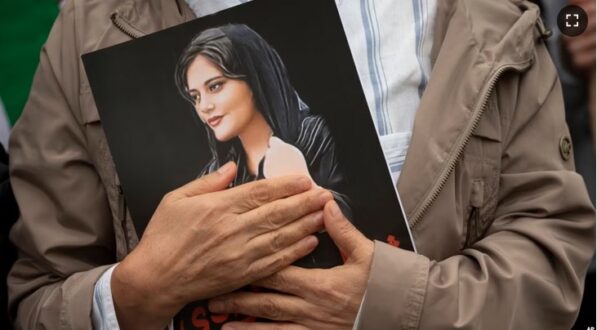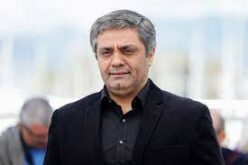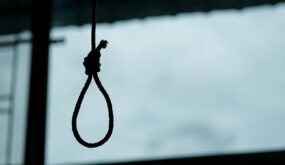Al-Monitor — One year ago, Iran was shaken by the tragic death of a 22-year-old woman named Mahsa Amini, an event that set off a chain of mass protests across the nation. Her demise in the custody of Iran’s morality police for allegedly not observing the strict hijab laws marked a shift in the country’s political landscape. These protests, initially aimed at challenging these hijab laws, soon transformed into sweeping demonstrations against the Islamic Republic itself.
The fallout from Amini’s death had far-reaching consequences, particularly in the realm of Iranian politics. The Reformists stood behind the protesters, acknowledging their demands for change. They insisted, Khabar reported, that meaningful changes be implemented within the political system, such as abolishing the compulsory hijab requirement and conducting free elections without the influence of Guardian Council, whose hard-liner members are appointed by the Supreme Leader Ayatollah Ali Khamenei and tasked with vetting candidates.
Different from 2009
Meanwhile, deep divisions within the Iranian political establishment began to surface, reminiscent of the events following the controversial 2009 presidential elections but on a much grander scale. During the 2009 elections, Reformist candidates Mir Hossein Mousavi and Mehdi Karroubi declared that the results were rigged, asserting that hard-line incumbent Mahmoud Ahmadinejad was not the rightful winner. The rift within the establishment was so profound that even several figures in the supreme leader’s office openly supported Mousavi.
According to a former conservative official who spoke to Al-Monitor on condition of anonymity, one notable example was Mohammad-Reza Nourollahian, a senior figure within Khamenei’s office who was later dismissed for his stance.
However, the current divisions are different. Hard-liners and other conservatives have varying opinions on how to address the people’s demands for change. While hard-liners are of the belief that the Islamic Republic must not alter its approach in domestic matters, some conservatives have come to recognize the need for flexibility and reform. For instance, regarding the issue of compulsory hijab, some conservatives including influential Tourism Minister Ezzatollah Zarghami have argued that the Islamic Republic should allow women to appear unveiled in public without fear of the police, Aftab news website reported last November. After Amini’s tragic death and the subsequent protests, this sentiment gained traction, with many officials acknowledging the need for significant reforms.
This trend gained such momentum that even some senior commanders within the Islamic Revolutionary Guard Corps were in favor of introducing reforms.
Mousavi, who has lived under house arrest for more than a decade, has called for a fundamental shift in the nature of the Iranian political system.
IRGC not monolithic
It’s important to note that the IRGC is not a monolithic organization. Its various commanders include many veterans who back some degree of social change. Even slain Quds Force commander Qasem Soleimani was among those voices who sought to end Mousavi’s house arrest and reduce the security apparatus’ pressure on Reformists, the Omid news site reported in January 2022.
However, according to Mahdi Nasiri, the former editor of the hard-line Kayhan newspaper, despite the ongoing debate over hijab and the apparent support for reforms among certain officials and IRGC commanders, Supreme Leader Ayatollah Ali Khamenei remained opposed to substantial changes. He identified four red lines: maintaining hostile relations with the United States, preserving the mandatory hijab policy, retaining the Guardian Council’s role in elections and upholding the house arrest of Mousavi and Karroubi.
مهدی نصیری سردبیر سابق کیهان افشاگری بی نظیری در ارتباط با #خامنهای کرده که حجت را بر همگان تمام میکند.
بخشی از سپاهیان با آقای علایی فرمانده سابق سپاه لیستی از اصلاحات را آماده میکنند و برای رهبری میبرند ولی خامنهای میگوید چهارتا خط قرمز دارد که کوتاه نخواهد آمد و جلوی اصلاحات…— omid dana (@omid_dana) May 5, 2023
The tensions in the Iranian establishment persisted, with some powerful officials apparently attempting to ease the pressure on women regarding the hijab issue. In the weeks following the protests, many women began to defy the dress code, venturing out without headscarves, and remarkably, no police officers intervened to stop them. However, their defiance riled staunch hard-liners, who rallied religious groups and organized small gatherings in front of the government, parliament and judiciary buildings to drum up popular support for hijab laws, Aftab news reported last December. One senior hard-line cleric in the judiciary called on religious groups to call on officials to take action over women who did not wear hijab. Interestingly, the judiciary did not appear to favor harsh reactions or the mass arrest of these women.
Tension within the establishment
According to a conservative figure who spoke to Al-Monitor on condition of anonymity, following the protests, tensions escalated within the establishment, especially among the hard-liners and Judiciary Chief Gholam-Hosseini Mohseni Ejei, who was not inclined to take a harsh line against women and protesters. However, he faced significant pressure from hard-liners, including those close to President Ebrahim Raisi.
Since Raisi assumed office, the influence of the IRGC and military officials within the executive branch has significantly increased. Many IRGC commanders were appointed to governmental positions, effectively consolidating the grip of hard-liners, including the radical group known as the “Endurance Front,” over Raisi’s government. For instance, the powerful interior minister is Gen. Ahmad Vahidi, the former IRGC Quds commander who has appointed many officials such as governors from the IRGC’s commanders.
According to the same source, hard-liners have amassed so much power that even moderately inclined figures like Mohammad Mokhber, the first vice minister, have come under fire from them. They seek to oust Mokhbar and replace him with people like Parviz Fattah, a former IRGC commander and a favored figure of the “Endurance Front.”
The power struggle between hard-liners and conservatives who advocate for flexibility and some degree of reform continues. Recently, as the result of hard-liner pressure, the morality policewas revived in a win for that camp. However, on the streets of Iran, it appears that its presence and activities remain relatively limited.
One critical juncture in this struggle is the fate of a new harsh hijab bill likely to be passed by the parliament, and whether it will be rigorously enforced.
The ongoing power struggle within the Iranian establishment will undoubtedly shape the country’s trajectory in the coming years, with significant implications for its domestic and foreign policies. The legacy of Amini’s tragic death continues to reverberate throughout Iran, serving as a catalyst for change and a point of contention in the nation’s ongoing struggle for political reform and individual freedoms.
 Shabtabnews In this dark night, I have lost my way – Arise from a corner, oh you the star of guidance.
Shabtabnews In this dark night, I have lost my way – Arise from a corner, oh you the star of guidance.



